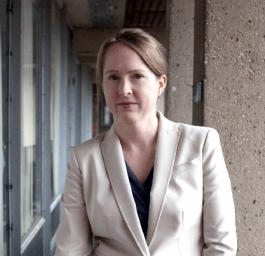Date:
Location:
 Ann Pearson
Ann Pearson
Harvard University, Department of Earth and Planetary Sciences
"What is microbial heterotrophy?"
Abstract: “You are what you eat, +1 permil” is a central principle of carbon isotope systematics that is widely applied to understand the trophic ordering of macrobiotic ecosystems. Although based on observations from multicellular organisms that are able to ingest “food”, this idea also has been applied to Precambrian ecosystems dominated by unicellular, microbial life, with the suggestion that such systems could sustain ordered trophic levels that would be observed in the isotope record. However, using a new approach to community profiling known as protein stable isotope fingerprinting (P-SIF), we have found that environmental samples show differences only between metabolically-distinct autotrophs; heterotrophs are not 13C-enriched. Thus we must re-examine some fundamental principles of microbial ecosystem scaling: Do microbes have trophic levels? What constitutes functional or metabolic complexity in a resource-sharing environment? Microbes cannot "eat" in the traditional sense, i.e., they assimilate small-molecule metabolites, implying that their carbon isotopic patterns should reflect their degree of substrate-specificity. In agreement, a survey of the distribution of 13C in several bacterial species shows that intracellular isotope distributions are a function of the primary carbon metabolite. Autotrophy, heterotrophy, and mixotrophy all are indistinguishable when the primary food source is fresh photosynthate, i.e., sugar. Mixed-substrate heterotrophy, in contrast, satisfies the classic “…+1‰” rule for bulk biomass, yet simultaneously it collapses intracellular patterns of 13C almost completely. Together these observations shift our understanding of the preservation of carbon isotope signatures in Earth history, suggesting that patterns of 13C must primarily reflect the changing nature of carbon inputs.
| pearson_seminarposter.pdf | 519 KB |
